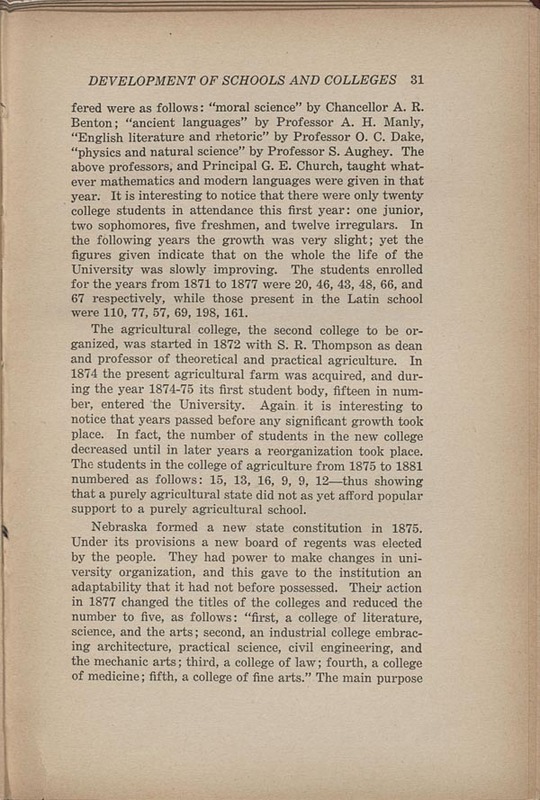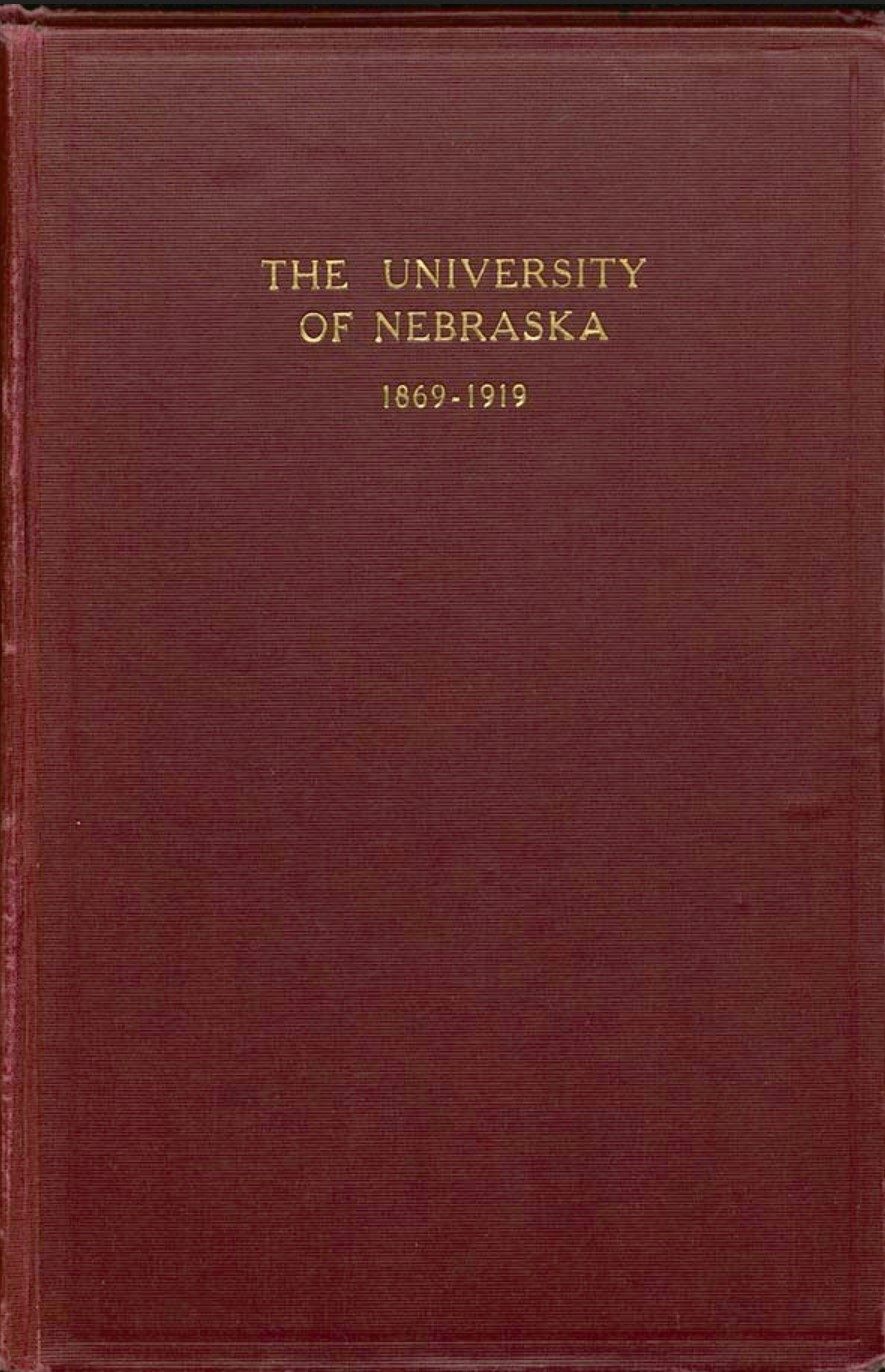035
Item
-
Title
-
035
-
Description
-
Semi-Centennial Anniversary Book: The University of Nebraska, 1869-1919
-
Transcription
-
fered were as follows: "moral science" by Chancellor A. R. Benton; "ancient languages" by Professor A. H. Manly, "English literature and rhetoric" by Professor O. C. Dake, "physics and natural science" by Professor S. Aughey. The above professors, and Principal G. E. Church, taught whatever mathematics and modern languages were given in that year. It is interesting to notice that there were only twenty college students in attendance this first year: one junior, two sophomores, five freshmen, and twelve irregulars. In the following years the growth was very slight; yet the figures given indicate that on the whole the life of the University was slowly improving. The students enrolled for the years from 1871 to 1877 were 20, 46, 43, 48, 66, and 67 respectively, while those present in the Latin school were 110, 77, 57, 69, 198, 161.
The agricultural college, the second college to be organized, was started in 1872 with S. R. Thompson as dean and professor of theoretical and practical agriculture. In 1874 the present agricultural farm was acquired, and during the year 1874-75 its first student body, fifteen in number, entered the University. Again it is interesting to notice that years passed before any significant growth took place. In fact, the number of students in the new college decreased until in later years a reorganization took place. The students the college of agriculture from 1875 to 1881 numbered as follows: 15, 13, 16, 9, 9, 12—thus showing that a purely agricultural state did not as yet afford popular support to a purely agricultural school.
Nebraska formed a new state constitution in 1875. Under its provisions a new board of regents was elected by the people. They had power to make changes in university organization, and this gave to the institution an adaptability that it had not before possessed. Their action in 1877 changed the titles of the colleges and reduced the number to five, as follows: "first, a college of literature, science, and the arts; second, an industrial college embracing architecture, practical science, civil engineering, and the mechanic arts; third, a college of law; fourth, a college of medicine; fifth, a college of fine arts." The main purpose
-
Rights
-
To inquire about usage, please contact Archives & Special Collections, University of Nebraska-Lincoln Libraries. These images are for educational use only. Not all images are available for publication.



